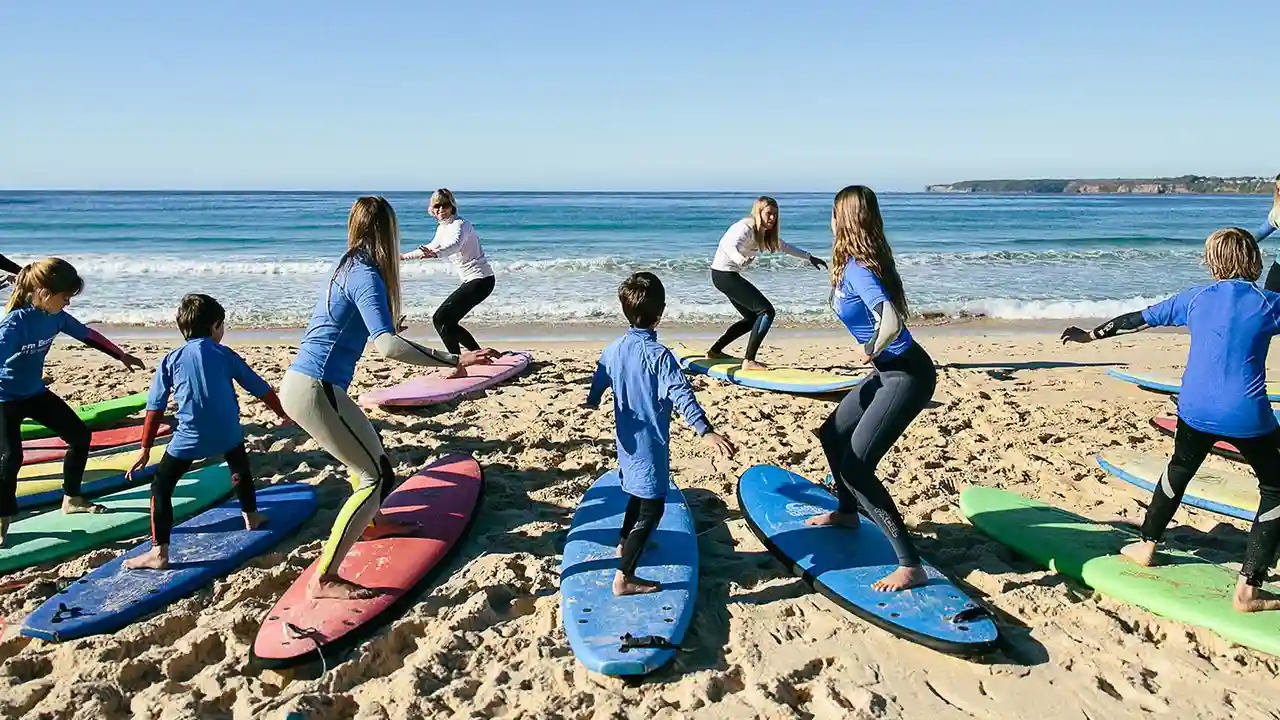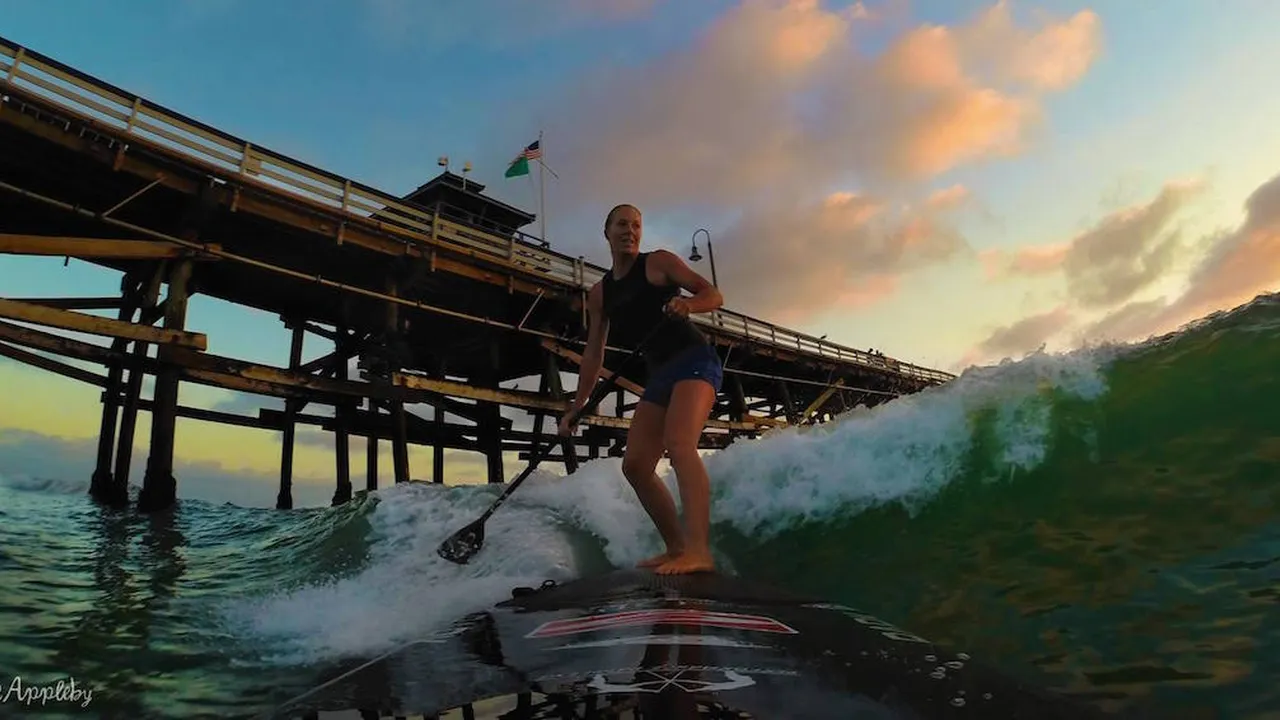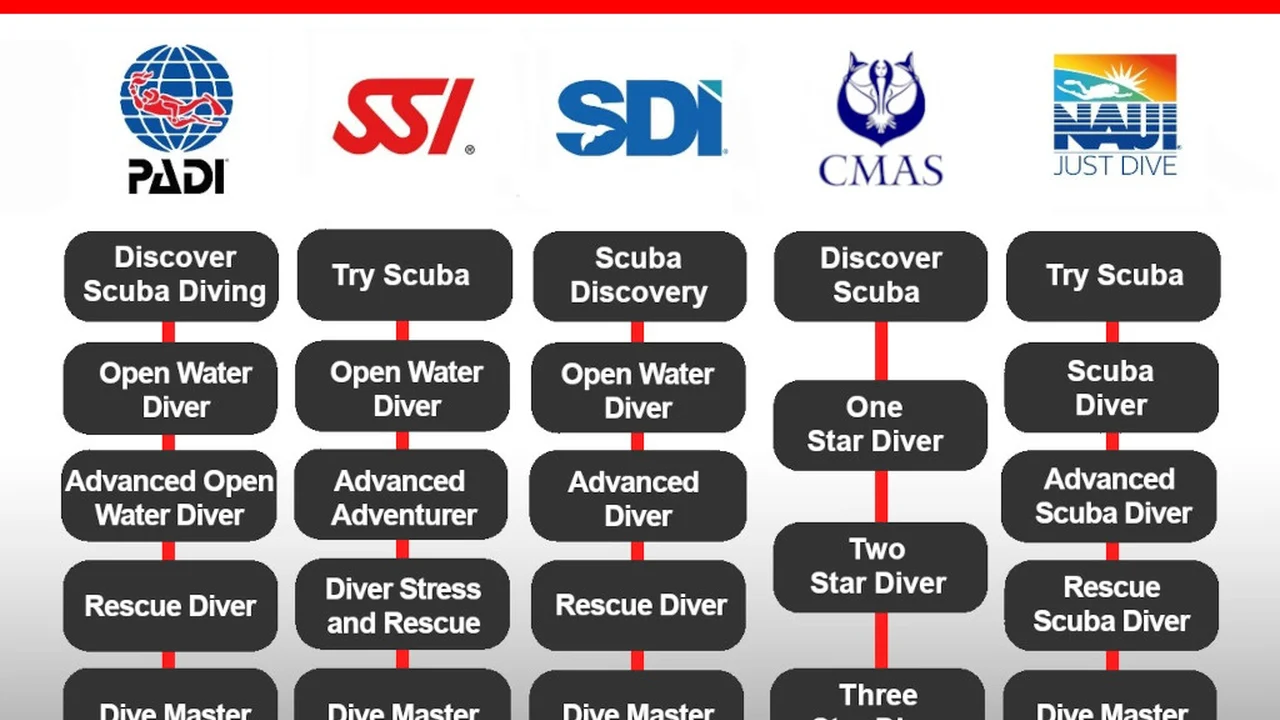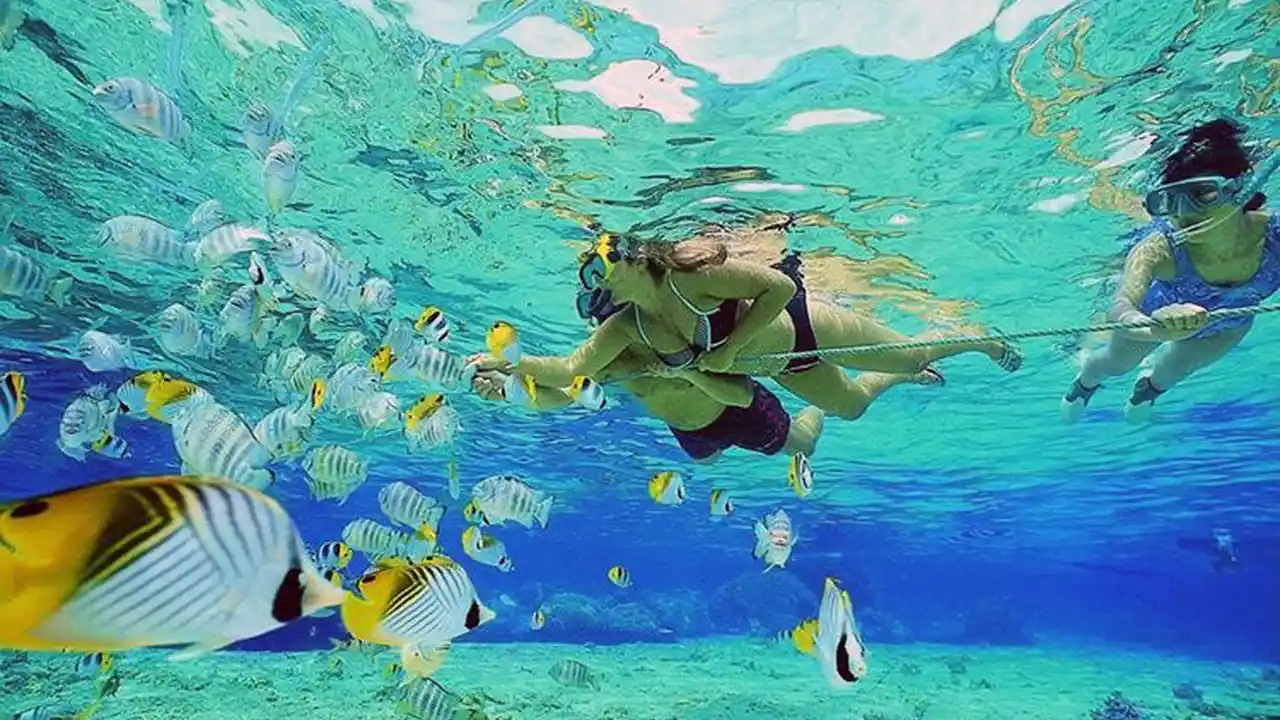Surfing Lessons: West Coast Schools

Understanding West Coast Surf Conditions for Optimal Surfboard Selection
So, you're stoked to ride the waves on the West Coast? Awesome! But before you paddle out, let's talk boards. The West Coast isn't a monolithic surf zone. From the powerful breaks of Northern California to the mellow rollers of Southern California, and up to the rugged coast of Oregon and Washington, the conditions vary wildly. Choosing the right surfboard is crucial for maximizing your fun and progression.
Think about it: a board that thrives in the punchy beach breaks of Huntington Beach might be a complete dog at Mavericks. Similarly, a gun designed for massive swells won't be much fun on a knee-high day in Malibu. Understanding these nuances is the first step to finding your perfect West Coast quiver.
What are some key factors to consider? Well, wave size is obviously important. But also think about wave shape (peaky vs. mellow), wave power (hollow vs. mushy), and the prevailing wind conditions. Northern California, for example, is often exposed to stronger winds and bigger swells than Southern California. Oregon and Washington offer a raw, untamed surfing experience with powerful waves and colder water. Knowing your local break inside and out will give you a huge advantage.
Also, don't forget about your skill level. A beginner shouldn't be trying to tame a shortboard in overhead surf. Start with a longer, more stable board and gradually work your way down as your skills improve. Be honest with yourself about your abilities and choose a board that will help you progress, not hinder you.
Surfboard Types and Their Suitability for West Coast Surfing
Okay, now let's dive into the exciting world of surfboards! There's a dizzying array of shapes, sizes, and constructions out there, so let's break down the most common types and how they perform on the West Coast:
Longboards The King of Consistency
Longboards are your go-to for smaller, mellower waves. Think classic California points like San Onofre or Malibu. They offer incredible paddle power, stability, and glide, making them perfect for beginners and those who just want to cruise. They're also surprisingly versatile, allowing for nose riding, cross-stepping, and even some stylish turns.
Pros: Excellent paddle power, stable platform, great for small waves, versatile for different styles.
Cons: Can be difficult to maneuver in larger waves, not ideal for steep drops.
West Coast Recommendation: A classic single-fin longboard is a must-have for any West Coast surfer who enjoys mellow days and logging sessions.
Funboards The Versatile All-Rounder
Funboards are the Goldilocks of surfboards – not too long, not too short, just right for a wide range of conditions. They offer a good balance of paddle power, stability, and maneuverability, making them a great choice for intermediate surfers and those who want a board that can handle a variety of waves.
Pros: Versatile, good balance of paddle power and maneuverability, suitable for a wide range of wave sizes.
Cons: Not as specialized as other board types, may not excel in very small or very large waves.
West Coast Recommendation: A 7'0" to 8'0" funboard is a great option for Southern California beach breaks and point breaks.
Shortboards The Performance Machine
Shortboards are designed for performance surfing in steeper, more powerful waves. They're highly maneuverable, allowing for radical turns, aerials, and other advanced maneuvers. However, they require a higher level of skill and aren't ideal for beginners or small, mushy waves.
Pros: Highly maneuverable, designed for performance surfing, suitable for steeper waves.
Cons: Requires a high level of skill, not ideal for beginners or small waves, can be difficult to paddle.
West Coast Recommendation: A performance shortboard is essential for tackling the punchy beach breaks of Huntington Beach or the reef breaks of Santa Cruz.
Fish Surfboards The Speed Demon
Fish surfboards are shorter, wider boards with a swallowtail, designed for speed and maneuverability in smaller to medium-sized waves. They're great for generating speed in flat sections and making quick turns. They're also a lot of fun to ride in more crowded conditions.
Pros: Fast, maneuverable, great for smaller waves, fun to ride in crowded conditions.
Cons: Can be unstable in larger waves, not ideal for steep drops.
West Coast Recommendation: A fish surfboard is a great addition to your quiver for those summer days when the waves are small but you still want to have some fun.
Guns The Big Wave Beast
Guns are long, narrow boards designed for riding massive waves. They offer incredible paddle power and stability, allowing surfers to safely navigate the world's biggest breaks. They're not for the faint of heart and require a high level of skill and experience.
Pros: Designed for riding massive waves, incredible paddle power and stability.
Cons: Requires a high level of skill and experience, not suitable for smaller waves.
West Coast Recommendation: If you're planning on surfing Mavericks or other big wave spots on the West Coast, you'll need a gun.
Surfboard Materials and Construction A Deep Dive
Beyond the shape, the materials and construction of your surfboard play a significant role in its performance and durability. Let's explore some of the most common options:
PU (Polyurethane) Foam The Classic Choice
PU foam is the traditional material used in surfboard construction. It's relatively inexpensive, easy to shape, and provides a good balance of flex and responsiveness. PU boards are typically glassed with polyester resin.
Pros: Affordable, easy to shape, good flex and responsiveness.
Cons: Less durable than epoxy boards, prone to dinging, absorbs water if damaged.
Epoxy Foam The Durable Alternative
Epoxy foam is a more modern alternative to PU foam. It's lighter, stronger, and more durable than PU, and it's less prone to dinging. Epoxy boards are typically glassed with epoxy resin.
Pros: Lighter, stronger, more durable, less prone to dinging.
Cons: More expensive than PU boards, can feel stiffer, less forgiving.
EPS (Expanded Polystyrene) Foam The Lightweight Champion
EPS foam is even lighter than epoxy foam. It's often used in high-performance surfboards because it provides excellent buoyancy and responsiveness. EPS boards are typically glassed with epoxy resin.
Pros: Extremely lightweight, excellent buoyancy and responsiveness.
Cons: Can be brittle, prone to denting, requires careful glassing.
Wood Surfboards The Sustainable Option
Wood surfboards are a more sustainable and environmentally friendly alternative to foam boards. They're typically made from sustainably harvested wood and glassed with bio-based resins. They offer a unique feel and aesthetic.
Pros: Sustainable, environmentally friendly, unique feel and aesthetic.
Cons: More expensive than foam boards, can be heavier, requires specialized construction techniques.
Surfboard Fins The Key to Control
Fins are essential for controlling your surfboard. They provide stability, drive, and maneuverability. Different fin setups and fin shapes can dramatically affect the way your board performs. Let's take a look at some common fin configurations:
Single Fin The Classic Cruiser
Single fins are typically used on longboards and provide a smooth, predictable ride. They're great for cruising and making long, arcing turns.
Twin Fin The Speedster
Twin fins are fast and loose, ideal for generating speed in smaller waves. They're often used on fish surfboards.
Thruster (Three Fin) The Versatile Standard
Thrusters are the most common fin setup. They offer a good balance of stability, drive, and maneuverability, making them suitable for a wide range of conditions.
Quad Fin The Speed and Grip Combo
Quad fins provide excellent speed and grip, making them ideal for powerful waves. They're often used on shortboards and guns.
Surfboard Brands and Models Recommended for West Coast Surfing
Now that you have a good understanding of surfboard types, materials, and fins, let's explore some specific brands and models that are well-suited for West Coast surfing:
Channel Islands Surfboards The Performance Leader
Channel Islands is a legendary surfboard brand known for its high-performance shortboards and innovative designs. Their boards are ridden by some of the world's best surfers.
Recommended Model: The CI Mid - A versatile mid-length that excels in a variety of West Coast conditions. Perfect for point breaks and beach breaks alike.
Lost Surfboards The Alternative Choice
Lost Surfboards is a more alternative brand known for its creative shapes and designs. They offer a wide range of boards, from high-performance shortboards to fun, quirky shapes.
Recommended Model: The Puddle Jumper - A small wave machine that's perfect for those summer days when the waves are small but you still want to have some fun. Great for Southern California beach breaks.
Firewire Surfboards The Eco-Conscious Innovator
Firewire Surfboards is known for its innovative construction techniques and its commitment to sustainability. They use eco-friendly materials and construction methods to create high-performance surfboards.
Recommended Model: The Seaside - A fish surfboard designed by Rob Machado that's perfect for generating speed and making quick turns in smaller waves. Great for California and Oregon.
Bing Surfboards The Classic Logger
Bing Surfboards is a classic longboard brand known for its high-quality craftsmanship and its timeless designs. Their boards are perfect for cruising and logging on mellow West Coast waves.
Recommended Model: The Classic Noserider - A quintessential longboard designed for nose riding and stylish cruising. Perfect for Malibu and San Onofre.
Takayama Surfboards The Hawaiian Legend
Takayama Surfboards, though rooted in Hawaii, have a huge following on the West Coast, especially in California. Their longboards are legendary, and their shorter shapes are incredibly versatile.
Recommended Model: Model T - A classic longboard with incredible glide and nose riding capabilities. Perfect for the long, peeling waves of Southern California.
Surfboard Pricing A Guide to Your Investment
Surfboard prices can vary widely depending on the brand, model, materials, and construction. Here's a general guide to what you can expect to pay:
- Longboards: $800 - $1500+
- Funboards: $600 - $1200
- Shortboards: $700 - $1400+
- Fish Surfboards: $650 - $1300
- Guns: $1000 - $2000+
Keep in mind that these are just general estimates. Custom surfboards will typically cost more than stock boards. You can also find used surfboards for sale at lower prices.
Surfboard Care and Maintenance Extending the Life of Your Board
Taking care of your surfboard is essential for extending its life and maintaining its performance. Here are some tips:
- Rinse your board with fresh water after every surf session. This will remove salt water and sand that can damage the board.
- Store your board in a cool, dry place away from direct sunlight. Sunlight can cause the foam to yellow and the resin to delaminate.
- Protect your board from dings and dents. Use a surfboard bag when transporting your board and be careful when handling it.
- Repair any dings or cracks immediately. Water can seep into the foam and cause it to rot.
- Replace your traction pad when it starts to wear out. A worn traction pad can make it difficult to grip the board.
West Coast Surfboard Retailers Where to Find Your Dream Board
The West Coast is home to a plethora of surf shops. Here are a few well-regarded options:
- Hansen's Surf Shop (Encinitas, CA): A San Diego institution with a massive selection.
- Jack's Surfboards (Various Locations, CA): A Southern California staple with a wide range of boards and gear.
- Surfside Sports (Costa Mesa, CA): Known for its knowledgeable staff and extensive selection.
- Nor Cal Surf Shop (Pacifica, CA): Serving the Northern California surf community for years.
- Cleanline Surf (Seaside, OR): A premier surf shop in Oregon, offering a great selection of boards and wetsuits for the colder waters.
The Future of Surfboard Design on the West Coast
Surfboard design is constantly evolving, and the West Coast is at the forefront of many of these innovations. Expect to see more sustainable materials, more advanced construction techniques, and more specialized board designs in the future. From AI-powered surfboard design to bio-resin advancements, the future of surfing on the West Coast looks bright and exciting. The emphasis on sustainability will only increase, driving innovation in eco-friendly materials and manufacturing processes. Expect to see more boards made from recycled materials, bio-resins, and sustainably harvested wood.
Ultimately, finding the perfect surfboard for West Coast waves is a personal journey. Experiment with different shapes, sizes, and materials until you find what works best for you. Happy surfing!
:max_bytes(150000):strip_icc()/277019-baked-pork-chops-with-cream-of-mushroom-soup-DDMFS-beauty-4x3-BG-7505-5762b731cf30447d9cbbbbbf387beafa.jpg)






